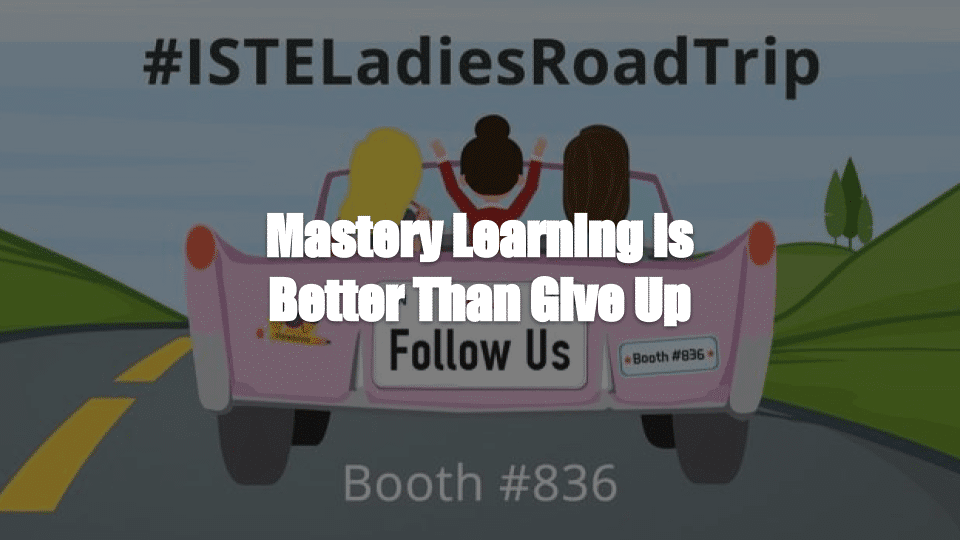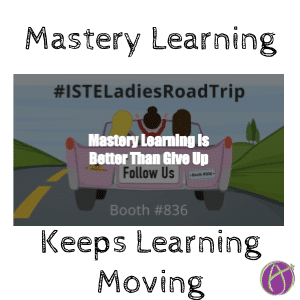
Redo Is Good for Learning
On our road trip from LA to Chicago myself, Lisa Dabbs, Christine Pinto, and Sarah Kerns stopped along the way to do PD at schools. You can find my slides at alicekeeler.com/isteroadtrip. One of the tips I shared was around the paradigm shift that technology allows around redo’s. Without technology the feasibility of students retaking until they pass is unreasonable. If I have to regrade something 26 times I will quit. But as Kentucky professor Thomas Guskey says, there is no research to support that giving a kid a low score is motivating. In fact, it’s the opposite. It causes them to give up.
Do it until you are successful, not until you’re at the bottom of the page.
Grit is better for learning than take your low score and move on. When technology can grade and regrade students have the opportunity to be successful without putting additional burdens on the teacher.
Google Forms
By default, Google Forms allows for “Submit another response.” Consider leaving this on so students can retake until they are successful.

Try this self-grading Google Forms quiz.
Self Grading Platforms
There are many digital platforms that will do the grading for you. Quizizz is one. In addition to relieving the tedious burden of marking things right or wrong, you get data to help you better address student needs. What was missed, how often was it missed, how many times did the student take the quiz? The Quizizz code in my Slides image will not work any longer, the Quizizz’s are time constrained before the code expires. Go to Quizizz and search for anything you’re teaching. I dare you to find a topic that someone has not already made a quiz for.

Do Not Let Students Think They Are Done
As soon as a kid thinks they are done with something it is like they are coated in Teflon. Comments and feedback slide off as they have mentally moved onto something else. Change the game from do it until you’re at the bottom of the page, to do it until you’re successful. There have been many times I ask my own children if I can help them. “No, I just want to get this done.” I can see they are not doing it correctly. They do not care, they do not want my help. Their sole motivation is to not get in trouble the next day for not having the work done, rather than achieving mastery. It being correct or that they have achieved mastery is not what they are concerned about. As a teacher, I typed up all the math problems for my students into Quia.com and took advantage of the question bank feature. I asked students to do 3 right in a row rather than 30 problems. Suddenly students needed my help. They can not be done until they actually are able to do the math.
Another way to not let your students not think they are done is to not make the assignment the assignment. Rather, the assignment is to respond to feedback. Whatever they submit initially is not for credit. They will receive feedback and their response to the feedback is what is evaluated.
A third trick is to “persevere in problem-solving.” That students work on something, then are given additional information to build on what they already did, and then give even more information to keep building on that. This may be an essay where students keep adding to and updating the information in the essay as they learn additional things throughout the year. This could be a larger project that comes in phases. One project I was involved with asked the students to design a wheelchair ramp for a particular house. They then learned parallel lines and applied that to their design. They later learned about slope and applied that to their project.









